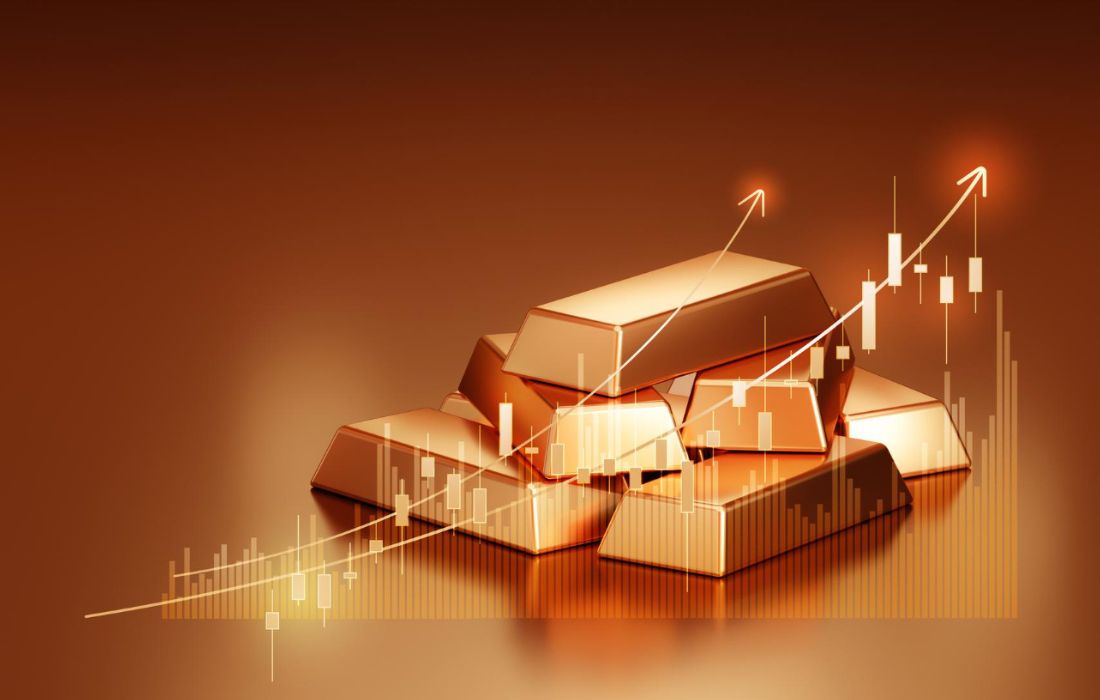Gold has been viewed as a popular investment in India. Whether it’s for weddings, festivals, or long-term savings, people tend to trust gold to hold its value. But have you ever wondered why gold prices rise and fall? One of the major reasons is inflation.
Inflation could affect your daily life and could also impact how much you pay for gold. If you are thinking of buying or investing in gold, it might be helpful to know its influence on the price of gold.
Table of Contents
What Is Inflation
Inflation means a rise in the general price level of goods and services over time. Simply put, you need more money than before to buy the same item. For example, something that cost ₹100 last year might cost ₹110 this year. That ₹10 increase is due to inflation. Inflation tends to affect everything from groceries, fuel, and travel to even gold. Small shifts in inflation could make a noticeable difference in gold prices over time. This is why understanding the relation between these becomes especially important when you are planning to purchase gold.
Why Does Inflation Affect Gold Rates
When inflation rises, people worry that their money might lose value. To protect their wealth, they could invest in gold, viewing gold as a safe asset. This could create more demand for gold, which pushes the price up.
Gold is also usually priced in US dollars. When inflation weakens the rupee, it could take more rupees to buy the same amount of gold. This might also cause gold rates to rise.
So, both local and global inflation might increase gold prices.
How Gold Acts as a Hedge Against Inflation
An inflation hedge protects your money from losing value when prices rise. It refers to an investment that holds or grows its value even as purchasing power drops.
When inflation is high, interest rates on savings accounts or fixed deposits may not be able to keep up. This means your money grows over time, but its purchasing power may have dropped. Gold could help to balance this loss.
Gold could perform better during inflation because it tends to retain its value while the paper currency goes down. This is why many people could include gold in their investment mix.
Real-life Example: Gold Rate Trends in Uttar Pradesh
Let’s take the example of the gold rate movement in a major Indian state like Uttar Pradesh. Over the years, the gold rate in Uttar Pradesh has shown steady growth. This could be mainly due to rising inflation, higher demand, and changing trends.
During high-inflation periods, people might buy gold as a safeguard. An increase in demand could lead to higher prices across local markets, including those of Uttar Pradesh.
Keeping track of local gold rates could help you understand how inflation might be affecting your city or state. Platforms like Bajaj Markets could provide reliable updates on gold prices, making it convenient for users to keep track of ongoing prices.
Gold prices are influenced by various factors beyond inflation:
- Global Demand and Supply: Increased demand, especially from foreign countries, could raise gold prices. For instance, trade tensions could drive global investors toward gold as a safe-haven asset.
- Central Bank Policies: When central banks purchase more gold to diversify reserves, it may boost demand and increase prices.
- Interest Rates: Lower interest rates could diminish returns on savings, making gold, a non-yielding asset, more attractive and hence increasing its price.
- Currency Value: A weaker domestic currency could make gold imports costlier, which might lead to higher local gold prices.
- Geopolitical Events: Political instability and conflicts could drive investors toward gold for its stability, increasing demand and prices.
Understanding these factors might aid in making informed investment decisions regarding gold.
Investing in Gold During Inflation
Gold could be a useful part of a balanced investment plan, especially during uncertain times. But you must also consider:
- Your investment goals
- Your financial situation
- Current gold prices
- Long-term performance
You could choose physical gold, digital gold, gold ETFs, or sovereign gold bonds, depending on your comfort level.
It is ideal to compare options before investing. Platforms like Bajaj Markets could provide access to different gold investment tools and current gold rates. This could help you make informed decisions.
Inflation may affect your purchasing power, savings, and lifestyle. Gold could help protect your wealth during such times. As inflation rises, keeping track of gold rates becomes essential.
Tracking local rates like the Gold Rate in Uttar Pradesh or your own city could help you time your purchases better. But remember gold should ideally be a part of a larger financial plan. It might not be a quick-return investment, but it could be a long-term safety net.
If you’re planning to invest, you could research to understand all your options better. Remember, tracking inflation trends and gold prices regularly might provide valuable insights. This could help you make smarter decisions when it comes to your investments.
Also Read: LessInvest.com Crypto: A Secure and Smart Way to Invest in Digital Assets







